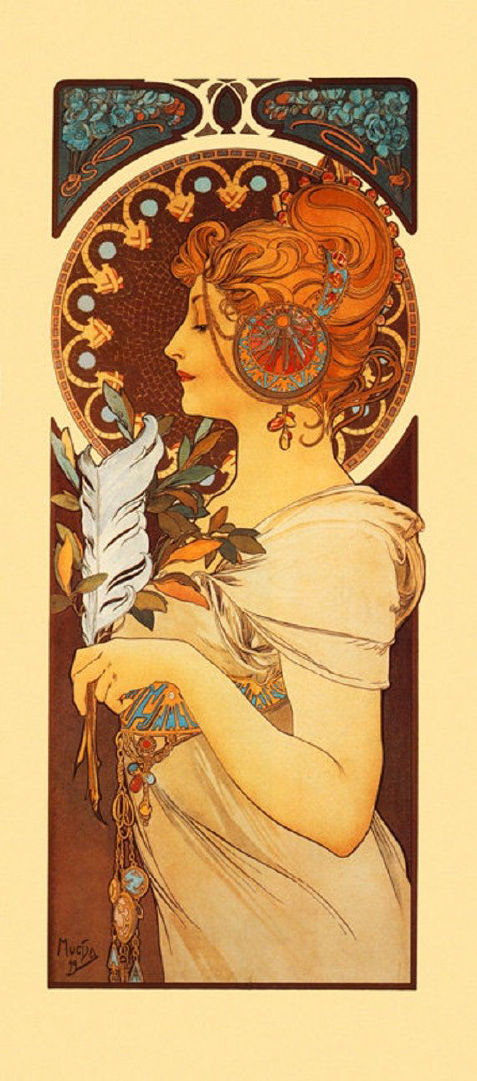Alphonse Mucha, born on July 24, 1860, in Ivančice, Czech Republic (then Moravia), was a revolutionary force in the world of art, blending intricate patterns, organic forms, and ethereal beauty. His devotion to the Art Nouveau movement left a lasting impact, with his works extending from posters to murals, jewelry to stage designs. His elegant and stylized female figures, paired with natural elements like flowers and flowing lines, became synonymous with the aesthetic of the time.
After studying in Munich and moving to Paris, Mucha gained recognition in 1894 when his poster for Sarah Bernhardt’s play Gismonda captivated the public. This breakthrough established him as one of the key figures of Art Nouveau, and his distinctive, flowing designs became widely known through commercial posters, advertisements, and illustrations.
Throughout his life, Mucha remained deeply patriotic, using his art to celebrate his Czech heritage. His magnum opus, The Slav Epic, a series of 20 large-scale paintings, commemorates the history and culture of the Slavic people. More than an artist, Mucha was a philosopher, believing that art should unite beauty and meaning. His contributions to the world of art continue to influence graphic design and visual culture, making him a timeless icon of creativity and national pride.
